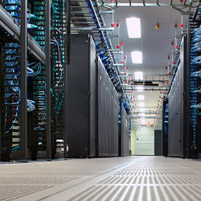Carbon Footprints: Electronic Products

A company aiming for eco-friendliness has a challenge. How much are its electronic goods contributing to its carbon footprint?
According to Carnegie Mellon University's Christopher Weber, crunching those numbers is not easy.
The results of his recent study found calculation of carbon footprints for products is often riddled with uncertainty.
Weber found that many variables can alter the accuracy of carbon footprint labeling. Among them — production, shipping and the technology used in creating a product.
Weber and his team monitored an IBM computer server as an example.
"We found that the use-phase of the server accounted for an estimated 94 percent of the total greenhouse gas emissions associated with the product," Weber said.
"This finding confirmed the importance of IBM's ongoing efforts to increase energy efficiency of its server products and the data centers where servers are used."
The study also highlighted the large uncertainties in quantifying the server's carbon footprint.
For example, a server in a region powered by wind turbines would have a lighter footprint than a region using less efficient electricity.
"Further complex systems requiring integrated circuits and several generations of technology increase the uncertainty of carbon footprint estimation for electronic goods."
Still, more companies are seeking to estimate the carbon footprints of their products. And sometimes they are going further into the products' environmental impact on water and pollution.
This can be an even more difficult task to estimate.
"Given the increased interest in product carbon footprints, we need to continue to question the accuracy of carbon footprint techniques," Weber said.
He added, "At this point, carbon footprint estimation methodologies are not accurate enough to warrant putting footprint labels on most products."
Weber is an adjunct professor in CMU's Department of Civil and Environmental Engineering. He's also a research staff member at the Science & Technology Policy Institute in Washington, D.C.
Related Links: Study Summary [.pdf] | Civil & Environmental Engineering
